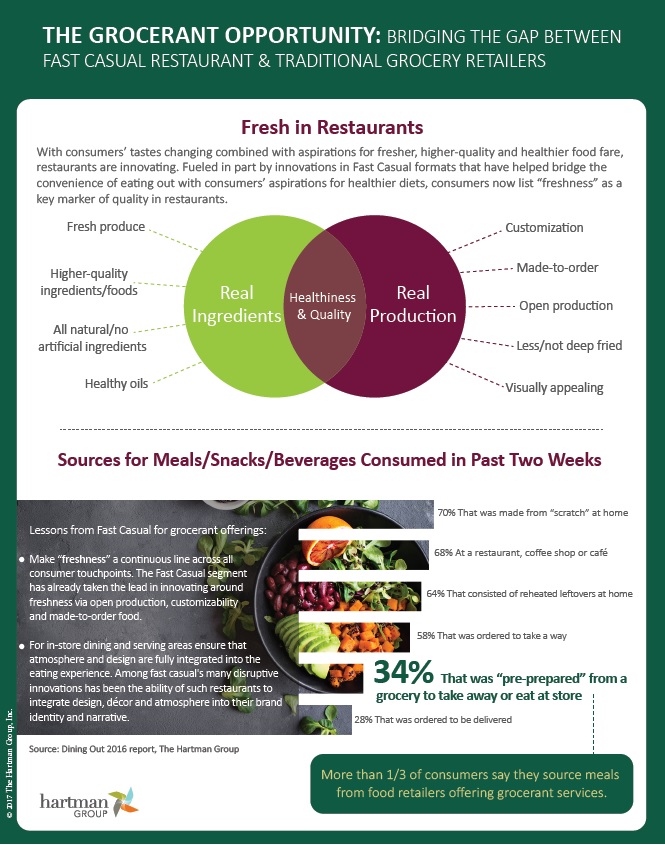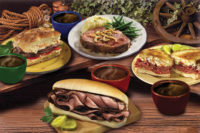Fresh in Restaurants
With consumers' tastes changing combined with aspirations for fresher, higher-quality and healthier food fare, restaurants are innovating. Fueled in part by innovations in Fast Casual formats that have helped bridge the convenience of eating out with consumers' aspirations for healthier diets, consumers now list "freshness" as a key marker of quality in restaurants.
| Real Ingredients | Healthiness & Quality | Real Production |
|---|---|---|
| Fresh produce | Customization | |
| Higher-quality ingredients/ foods | Made-to-order | |
| All natural/ no artificial ingredients | Open production | |
| Healthy oils | Less/ not deep fried | |
| Visually appealing |
Sources for Meals/Snacks/Beverages Consumed in Past Two Weeks
- 70% That was made from "scratch" at home
- 68% At a restaurant, coffee shop or café
- 64% That consisted of reheated leftovers at home
- 58% That was ordered to take a way
- 34% That was "pre-prepared" from a grocery to take away or eat at store
- More than 1/3 of consumers say they source meals from food retailers offering grocerant services
- 28% That was ordered to be delivered
Lessons from Fast Casual for grocerant offerings:
- Make "freshness" a continuous line across all consumer touchpoints. The Fast Casual segment has already taken the lead in innovating around freshness via open production, customizability and made-to-order food.
- For in-store dining and serving areas ensure that atmosphere and design are fully integrated into the eating experience. Among fast casual's many disruptive innovations has been the ability of such restaurants to integrate design, décor and atmosphere into their brand identity and narrative.

SOURCE: Dining Out 2016 report
©2017 The Hartman Group, Inc. All rights reserved.
hartman-group.com




